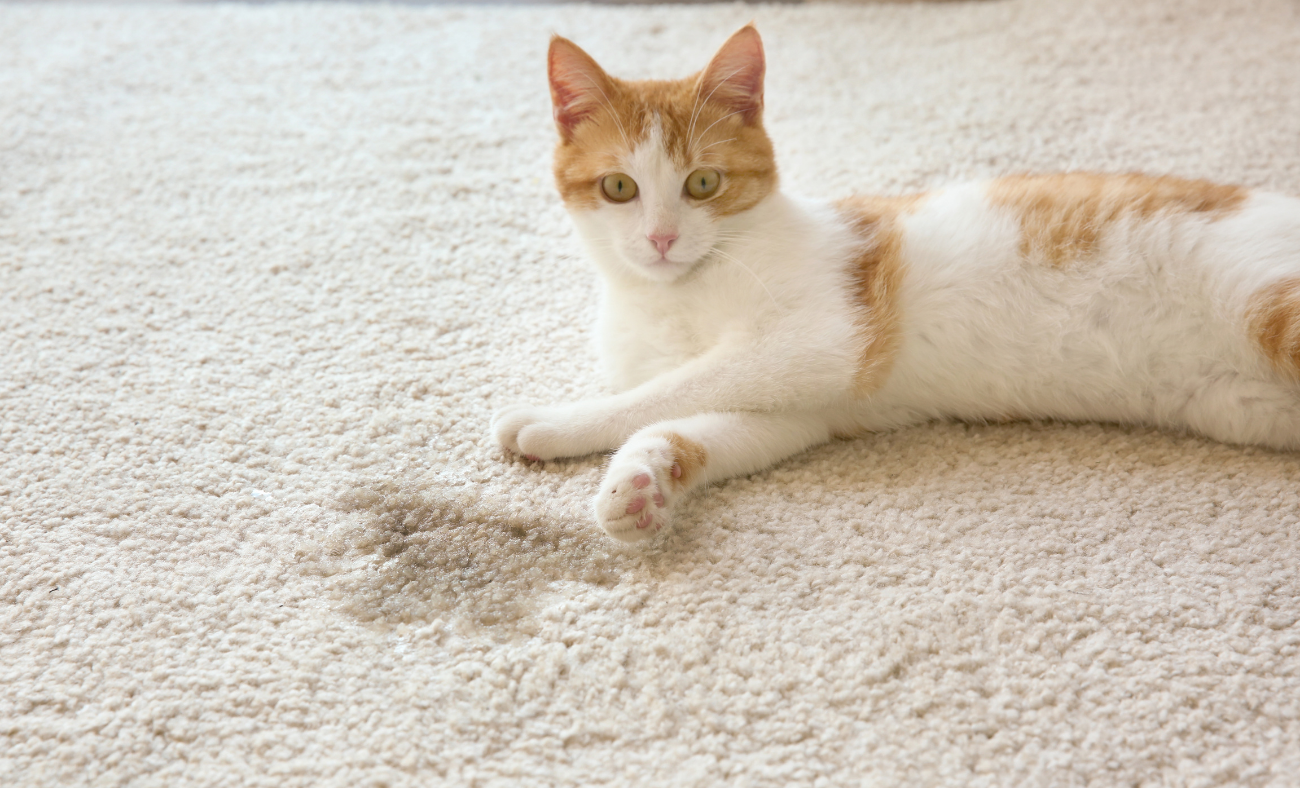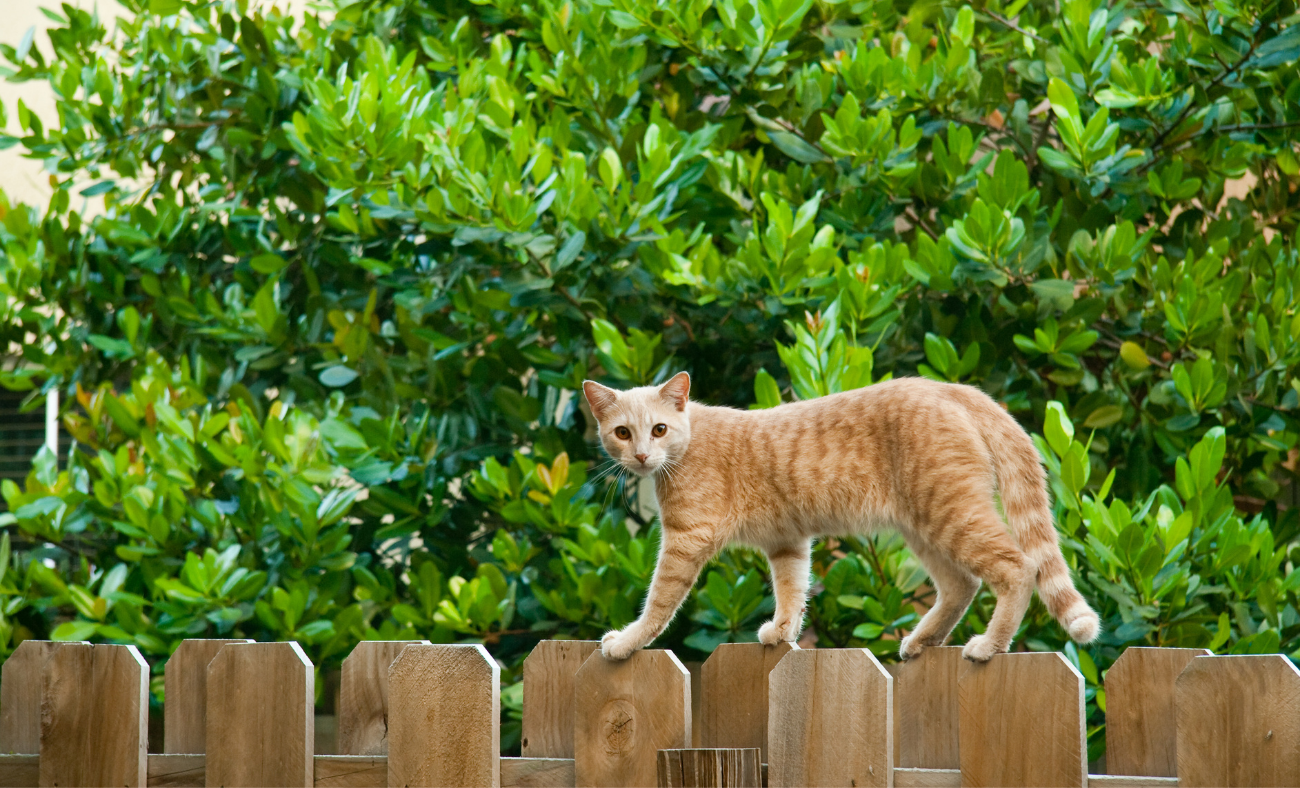Is that a cute cat hiding under the bed? Or is it sending you an SOS signal you’re missing.
We see them everywhere on social media — perfectly poised cats lounging in the sun, adorable kittens sleeping peacefully in designer beds, and those viral videos of everyday cats doing crazy things that make us all smile. But what Instagram doesn’t show you are the subtle signs that many of these same cats might be silently struggling with stress and anxiety.
As someone who has spent years understanding the complex emotional world of cats, I’ve learned that feline stress often masquerades as normal behavior. The very independence we admire in cats can actually work against them when they’re suffering. Unlike dogs, who typically wear their emotions openly, cats have evolved to hide vulnerability — a survival mechanism that can leave modern house cats suffering in silence while their human parents remain completely unaware.
The Reality Behind the Perfect Cat Photos
Social media has created an unrealistic standard for cat behavior. We see curated moments of feline perfection and assume that’s the norm. What we don’t see are the hours spent coaxing a stressed cat out from under furniture, the mysterious middle-of-the-night vocalizations, or the gradual changes in eating patterns that signal something deeper is happening.
The truth is that stress and anxiety in cats is far more common than most people realize. Research suggests that up to 25% of cats experience some form of anxiety, yet the vast majority of cases go unrecognized because the signs of stress and anxiety in cats can be incredibly subtle. Unlike the dramatic displays we might expect, cat stress and anxiety often manifests in ways that seem quirky, cute, or simply part of a cat’s individual personality.
This disconnect between perception and reality means countless cats are living with chronic stress while their loving families remain oblivious to their suffering. The cats aren’t choosing to hide their distress to be difficult — they’re hardwired to mask vulnerability, even from the humans they trust most.
The Essential 12 Stress Indicators: Your Foundation for Understanding Cat Anxiety
Through my experience with everything from childhood rescues to my own cat’s stress-induced cystitis, combined with my current studies in Understanding Feline Anxiety, I’ve identified twelve fundamental stress indicators that form the cornerstone of effective cat stress assessment. These Essential 12 represent the most observable, actionable, and reliable signs that cat parents can learn to recognize and address.
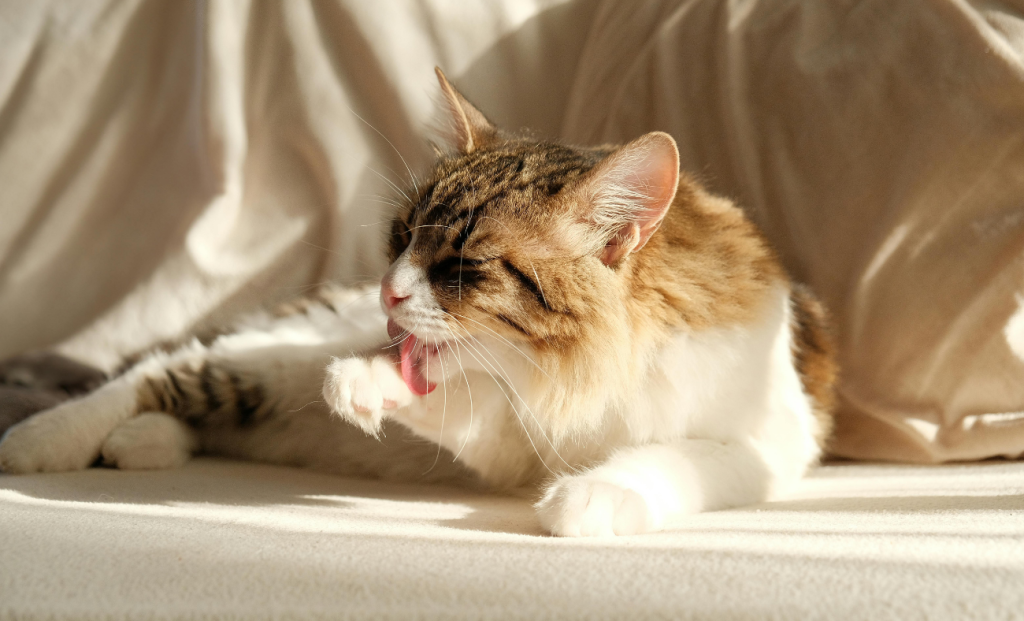
Behavioral Foundations (The Core 6)
These six indicators form the behavioral foundation of cat stress recognition. They’re the most observable changes that directly impact daily family life and create immediate opportunities for intervention.
1. The Stress Grooming Specialist
While cats are naturally meticulous groomers, excessive grooming often indicates underlying anxiety. Cat stress symptoms frequently include repetitive licking that goes beyond normal maintenance. You might notice small bald patches, particularly on the belly, inner thighs, or legs — areas that are easy for cats to reach when they’re self-soothing through grooming.
This behavior develops gradually, creating a cycle where stressed cats continue grooming even when it begins causing skin irritation or hair loss. My studies have taught me that this displacement behavior serves as both a self-soothing mechanism and a visible indicator of internal emotional distress.
2. The Litter Box Anxiety Communicator
Perhaps no cat stress sign is more frustrating for owners than inappropriate elimination, yet it’s one of the most reliable indicators of feline anxiety. Cats experiencing stress may begin avoiding their litter box, even when it’s clean and accessible. This isn’t spite or defiance — it’s often a stress response to environmental changes, territorial anxiety, or feeling unsafe in their usual elimination areas.
This behavior might start subtly, with occasional accidents, before progressing to complete avoidance. When my own cat developed stress-induced cystitis, inappropriate elimination became one of the first critical indicators. This led me to create her sanctuary space and systematically analyze the environment to identify what caused the original stress that had led to the medical condition.
3. The Appetite Pattern Disruptor
Changes in eating patterns are among the most subtle signs of stress and anxiety in cats. This doesn’t always mean complete loss of appetite — stressed cats might become food-obsessed, eating too quickly, or developing sudden preferences for eating in isolation. Others might become incredibly picky, refusing previously enjoyed foods or eating only tiny amounts throughout the day.
The stress-eating connection in cats is complex, with anxiety potentially causing both under-eating and over-eating depending on the individual cat’s coping mechanisms and specific stressors involved.
4. The Invisible Cat Syndrome
Cat hiding behavior extends far beyond the occasional under-bed retreat. Chronically stressed cats often become masters of invisibility, finding increasingly creative hiding spots and spending significantly more time away from family activities. They might still emerge for meals or brief interactions, but their overall presence in the household diminishes dramatically.
This withdrawal often happens gradually, so families don’t always realize how much their cat’s social engagement has decreased until they specifically look for patterns in daily visibility and interaction. I witnessed this firsthand as a child when the stray cats I rescued would retreat to their safe spaces during times of stress.
5. The Social Distance Calculator
Cats experiencing anxiety often become social chameleons, present but not truly engaged. They might sit in the same room as their family but remain noticeably distant, avoiding direct eye contact, reducing their purring, or becoming less responsive to their usual names or calls.
This type of withdrawal is particularly heartbreaking because the cat clearly wants to be near their humans but feels too stressed to engage in normal bonding behaviors like lap-sitting, head bumping, or interactive play. The social distance they create serves as both a protection mechanism and a subtle communication about their emotional state.
6. The Vocal Stress Pattern Modifier
While some cats are naturally chatty, sudden changes in vocalization patterns often indicate anxiety. Cat stress and anxiety might manifest as increased meowing, particularly plaintive or distressed-sounding calls, or conversely, as unusual quietness in previously vocal cats.
Feline separation anxiety symptoms commonly include excessive vocalization when owners prepare to leave or immediately after they depart. These vocalizations serve as both stress release and attempts to communicate distress to their human companions.
Physical & Environmental Indicators
(The Supporting 4)
These four indicators provide crucial environmental context and help identify cats whose stress is manifesting through physical symptoms or territorial concerns.
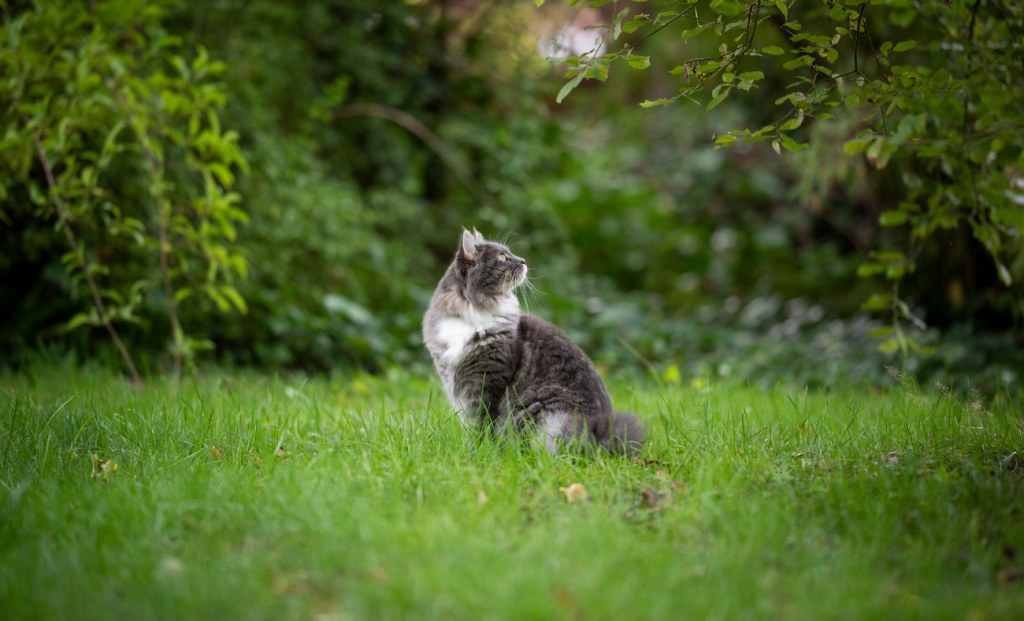
7. The Hypervigilance Environmental Monitor
Stressed cats often become hyperaware of their environment, displaying an intensity of alertness that goes beyond normal curiosity. They might startle easily at familiar sounds, spend excessive time monitoring windows or doorways, or seem unable to truly relax even in previously comfortable spaces.
This constant state of alertness is exhausting for cats and often indicates they don’t feel secure in their environment, despite having lived there safely for extended periods.
8. The Sleep Pattern Disruptor
Those sudden bursts of energy at 3 AM that we playfully call “zoomies” can actually be a sign of pent-up stress and anxiety. While some nighttime activity is normal for cats, anxious cat behavior often includes frantic running, sudden sprinting for no apparent reason, or hyperactive episodes that seem disconnected from play or hunting instincts.
Stressed cats may struggle to settle into normal sleep patterns, leading to these explosive releases of nervous energy during the quiet nighttime hours when their anxiety has nowhere else to go.
9. The Territorial Anxiety Responder
Signs of anxiety in cats and general stress often include unusual territorial behaviors such as urine marking, aggressive guarding of resources like food bowls or favorite sleeping spots, or sudden conflicts with previously peaceful housemate cats.
These territorial assertions typically indicate that a cat feels their security is threatened and they need to establish clearer boundaries to feel safe in their own home.
10. The Routine Disruption Reactor
While cats are famous for loving routine, stressed cats become almost obsessively dependent on familiar patterns. Any deviation from expected schedules — feeding times, family routines, or environmental arrangements — can trigger noticeable anxiety responses that seem disproportionate to the actual change.
This inflexibility often develops gradually as cats use routine predictability to manage underlying stress, making them increasingly vulnerable to anxiety when their carefully constructed sense of security is disrupted.
Stress Manifestations (The Critical 2)
These final two indicators often drive cat parents to seek help because they create immediate, obvious problems that demand attention and intervention.
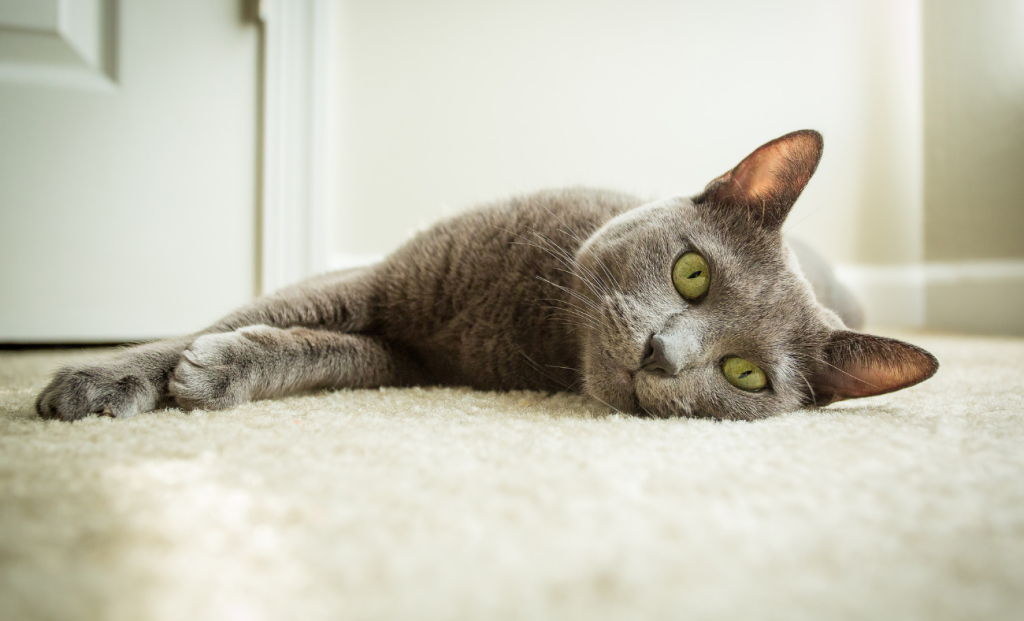
11. The Phantom Illness Performer
Many cat stress symptoms can mimic medical conditions, leading to expensive veterinary visits that reveal no physical problems. Stress can cause digestive issues, respiratory changes, frequent urination, and even limping or mobility issues that disappear when the underlying anxiety is addressed.
These psychosomatic symptoms are genuine physical responses to emotional distress, not manipulative behavior, and they demonstrate how profoundly stress affects feline physical health. My own cat’s stress-induced cystitis taught me firsthand how emotional distress can manifest as serious physical symptoms requiring immediate intervention.
12. The Furniture Destruction Specialist
Inappropriate scratching that suddenly targets furniture, walls, or unexpected surfaces often signals territorial anxiety or stress. While all cats need to scratch, anxious cat behavior includes scratching that seems compulsive, destructive, or focused on areas that hold their owner’s scent, such as sofas, beds, or clothing.
This behavior often intensifies during periods of household change or when cats feel their territory is threatened, making it a reliable indicator of environmental stress.
Why These Essential 12 Go Unnoticed
While some of these Essential 12 stress signals are obvious, the subtle nature of others means that most cat parents don’t recognize them until they’ve become severe or multiple signs appear simultaneously. We tend to interpret these behaviors through human emotional frameworks, assuming that a cat who eats and uses the litter box must be fine, without recognizing that cat stress and anxiety operates on a much more complex emotional spectrum.
Additionally, many of these behaviors develop slowly over weeks or months, making it difficult to identify the point when normal quirks became stress indicators. Cats are also masters of compensation — they’ll maintain essential functions like eating and elimination while sacrificing comfort behaviors like play, affection-seeking, and relaxation.
Social media compounds this problem by normalizing only the most photogenic moments of cat ownership, leaving parents unprepared for the reality that even well-loved, well-cared-for cats can develop anxiety in response to subtle environmental or social changes.
The Serene Feline Essential 12 Assessment System
Understanding these twelve fundamental indicators is only the first step toward helping your cat achieve true serenity. The key to addressing cat stress and anxiety lies in developing a systematic approach to monitoring your cat’s emotional well-being and environmental comfort.
This Essential 12 framework forms the foundation of what I call The Serene Feline System™ — a comprehensive approach to creating peaceful cat environments that I developed through combining my crisis management expertise with deep understanding of feline emotional needs.
Begin by establishing baseline observations of your cat’s normal patterns across all twelve behavioral categories. Most cat parents don’t realize how much their cat’s daily habits can reveal about their emotional state until they start paying deliberate attention to the details. Track eating schedules, typical hiding spots, social interaction patterns, and response to routine changes.
Create a simple monitoring system that allows you to notice gradual changes before they become serious problems. This doesn’t require complex charts or time-consuming documentation — even basic mental notes about whether your cat seems more or less engaged, visible, and relaxed compared to their typical patterns can provide valuable early warning signs.
From Recognition to Transformation
Once you’ve identified potential stress signals using the Essential 12 framework, the next step involves systematic environmental assessment and modification. Cat anxiety often stems from environmental factors that humans don’t perceive as threatening but cats do.
Evaluate your home from a cat’s perspective, considering factors like noise levels, traffic patterns, resource accessibility, and territorial security. Many anxiety triggers can be addressed through strategic environmental modifications that create more sanctuary spaces and reduce competition or conflict points.
Consider the role of scent, lighting, and sound in your cat’s daily experience. Cats rely heavily on olfactory communication and environmental consistency, so even small changes in cleaning products, air fresheners, or household routines can create stress that manifests as the subtle behavioral changes we’ve discussed.
The Power of Systematic Understanding
The Essential 12 framework transforms overwhelming cat behavior concerns into manageable, observable patterns that guide effective intervention strategies. Rather than guessing at solutions or trying random approaches, this systematic assessment provides clear direction for creating environments that naturally support feline emotional well-being.
My experience applying crisis management principles to my own cat’s stress taught me that anxiety in cats responds to the same logical, systematic interventions that resolve complex business problems. Understanding root causes, implementing strategic solutions, and monitoring progress create sustainable improvements that address underlying issues rather than just managing symptoms.
Building Your Cat’s Stress Resilience Through the Essential 12
The ultimate goal isn’t just to address immediate cat stress symptoms but to build your cat’s long-term emotional resilience and create an environment that naturally supports their psychological well-being. This involves understanding your individual cat’s personality, stress triggers, and comfort needs well enough to anticipate and prevent anxiety rather than simply responding to it when it occurs.
Successful stress management becomes an ongoing partnership between you and your cat, built on careful observation, environmental awareness, and systematic responses to their emotional needs. The cats who thrive are those whose humans have learned to read their subtle communication and respond with appropriate environmental and emotional support.
Your Journey from Instagram Illusion to Real Understanding
The Essential 12 stress indicators we’ve explored aren’t character flaws or inevitable aspects of cat ownership — they’re communication attempts from cats who need our help creating true serenity in their daily lives. Recognizing these hidden stress signals is the first step toward transforming your cat’s daily experience from survival mode to genuine contentment.
Every cat deserves to feel secure, understood, and emotionally supported in their home environment. Your commitment to understanding and addressing these twelve essential stress indicators demonstrates the kind of protective, systematic care that creates the foundation for genuine feline wellbeing and the deep, trusting relationship every cat parent hopes to achieve.
Remember, behind every perfectly posed Instagram cat photo is a real animal with complex emotional needs. The Essential 12 framework gives you the tools to see beyond the surface and recognize when your cat needs your help creating the sanctuary they deserve.
When cat anxiety reaches the point of causing serious behavioral issues, the situation demands more than trial-and-error solutions. Making the difference between a cat who merely copes and one who truly thrives requires patience, understanding, thoughtful planning, and strategic implementation using frameworks like the Essential 12.
So, if you’re ready to dive deeper into your cat’s emotional wellbeing using this systematic approach, then download our FREE comprehensive Cat Stress Assessment Checklist: The Essential 12 Hidden Signals. This practical tool guides you through each of the twelve critical stress indicators and provides actionable steps for creating the serene environment your cat truly deserves.
This assessment will enable you to systematically evaluate your cat’s current stress levels across all Essential 12 indicators and create a personalized plan for building their emotional resilience. The framework that transformed my understanding of feline stress management can become the foundation for your cat’s journey to genuine serenity.

